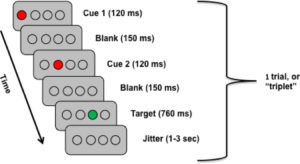Improve Schizophrenia with Mindfulness
By John M. de Castro, Ph.D.
“Mindfulness treatments do not aim to decrease the occurrence or severity of the symptoms of psychosis, but by helping to reduce the distress people experience.” – Tania Lecomte
Schizophrenia is the most common form of psychosis. It effects about 1% of the population worldwide. It appears to be highly heritable and involves changes in the brain. It is characterized by both positive and negative symptoms. Positive symptoms include hallucinations; seeing and, in some cases, feeling, smelling or tasting things that aren’t there, or delusions; unshakable beliefs that, when examined rationally, are obviously untrue. Negative symptoms include a reduced ability to function normally, neglect of personal hygiene, lack of emotion, blank facial expressions, speaking in a monotone, loss of interest in everyday activities, social withdrawal, an inability to experience pleasure, and a lack of insight into their symptoms. The symptoms of schizophrenia usually do not appear until late adolescence or early adulthood.
Schizophrenia is very difficult to treat with psychotherapy and is usually treated with antipsychotic drugs. These drugs, however, are not always effective, sometimes lose effectiveness, and can have some difficult side effects. In addition, even when effective, antipsychotic drugs only treat the positive symptoms of schizophrenia, leaving the negative symptom intact including the loss of functionality and a lack of insight. Hence, there is a need for safe and effective alternative treatments for schizophrenia that can treat the negative symptoms.
Mindfulness training has been shown to be beneficial for a variety of mental health problems, including psychosis. Mindfulness has also been shown to associated with lower symptom severity of schizophrenia. Another treatment, psychoeducation specific for schizophrenia, has also been shown to reduces relapse rates and improve medication adherence. Psychoeducation consists of working with individual patients and their families to improve schizophrenia survival skills, focusing on stressful situation and coping strategies, and problem-solving. Since both mindfulness training and psychoeducation appear to be effective their combination may be particularly effective in treating schizophrenia.
In today’s Research News article “An international multi-site, randomized controlled trial of a mindfulness-based psychoeducation group programme for people with schizophrenia.” See summary below or view the full text of the study at: https://www.ncbi.nlm.nih.gov/pmc/articles/PMC5551382/, Chien and colleagues recruited patients who were diagnosed with schizophrenia and randomly assigned them to receive either treatment as usual, 6-weeks of psychoeducation alone, or 6-weeks of psychoeducation in combination with mindfulness training. The participants were measured before and after the treatment programs, and 6 and 18 weeks later for average number and length of re-hospitalizations, level of functioning, insight into illness, and schizophrenia symptoms.
They found that whereas the treatment as usual group had significant deterioration in all measures both intervention groups had significant improvements specifically in average length of rehospitalizations; patient functioning, including improvements in social and community functioning and self-management; patient mental state, including reductions in both positive and negative symptoms; and insight into their illness. In addition, there was a significant increase in complete remissions in the intervention groups. Importantly, in every case the psychoeducation in combination with mindfulness training produced significantly superior results to the psychoeducation alone condition.
These results suggest that psychoeducation alone is an effective treatment for schizophrenia, but the addition of mindfulness training markedly improves the outcomes. In the treatment as usual condition only 7% of the patients achieved remission while in the psychoeducation condition 27% achieved remission and with added mindfulness training 39% remissions were achieved. These are remarkable improvements in a very difficult condition to treat. The results suggest that teaching schizophrenia patients the skills to cope with their disease is very useful but that making them more mindful greatly improves this coping. It would appear that being able to look at and experience the symptoms of their disease in the present moment non-judgmentally improves the patients’ ability to cope with and alter their symptoms.
So, improve schizophrenia with mindfulness.
“mindfulness-based psycho-educational intervention expressly designed for patients with schizophrenia can be well tolerated and result in better illness outcomes than either standard treatment alone or standard treatment supplemented by a more typical psycho-educational approach. This is an important finding because of the widely held belief that psychotic patients can neither tolerate nor benefit from mindfulness-based interventions.” – American Mindfulness Research Association
CMCS – Center for Mindfulness and Contemplative Studies
This and other Contemplative Studies posts are also available on Google+ https://plus.google.com/106784388191201299496/posts and on Twitter @MindfulResearch
Study Summary
Chien, W. T., Bressington, D., Yip, A., & Karatzias, T. (2017). An international multi-site, randomized controlled trial of a mindfulness-based psychoeducation group programme for people with schizophrenia. Psychological Medicine, 47(12), 2081–2096. http://doi.org/10.1017/S0033291717000526
Abstract
Background
We aimed to test a mindfulness-based psychoeducation group (MBPEG), v. a conventional psychoeducation group (CPEG) v. treatment as usual (TAU), in patients with schizophrenia-spectrum disorders over a 24-month follow-up.
Method
This single-blind, multi-site, pragmatic randomized controlled trial was conducted in six community treatment facilities across three countries (Hong Kong, mainland China and Taiwan). Patients were randomly allocated to one of the treatment conditions, and underwent 6 months of treatment. The primary outcomes were changes in duration of re-hospitalizations and mental state (Positive and Negative Syndrome Scale; PANSS) between baseline and 1 week, and 6, 12 and 18 months post-treatment.
Results
A total of 300 patients in each country were assessed for eligibility between October 2013 and 30 April 2014, 38 patients per country (n = 342) were assigned to each treatment group and included in the intention-to-treat analysis. There was a significant difference in the length of re-hospitalizations between the three groups over 24 months (F2,330 = 5.23, p = 0.005), with MBPEG participants having a shorter mean duration of re-hospitalizations than those in the other groups. The MBPEG and CPEG participants had significant differential changes in proportional odds ratios of complete remission (all individual PANSS items <3) over the 24-month follow-up (37 and 26%, respectively), as opposed to only 7.2% of the TAU group (χ2 = 8.9 and 8.0, p = 0.001 and 0.003, relative risk = 3.5 and 3.1, 95% confidence interval 2.0–7.2 and 1.6–6.3).
Conclusions
Compared with TAU and CPEG, MBPEG improves remission and hospitalization rates of people with schizophrenia spectrum disorders over 24 months.









